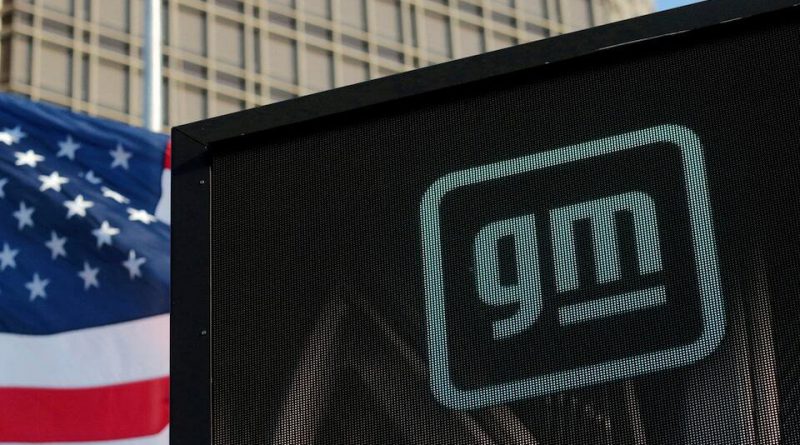General Motors adapts EV strategy to strengthen long-term growth and efficiency
General Motors recalibrates EV production to strengthen efficiency and drive long-term electric growth
General Motors is realigning its electric vehicle (EV) production strategy as part of a broader plan to ensure sustainable growth, operational efficiency, and future profitability.
The decision, which includes temporary adjustments in EV and battery manufacturing at select facilities, reflects the company’s commitment to adapting swiftly to market conditions while maintaining a strong focus on innovation and long-term value creation.
Beginning in January, GM will consolidate production at its Detroit EV plant to one shift, a move designed to optimize resources and align with evolving demand trends.
While this will temporarily impact around 1,200 positions, the company has assured that the adjustment will help balance inventory levels and position GM to scale up more effectively when demand accelerates again.
The plant currently produces key models such as the Chevrolet Silverado EV, GMC Sierra EV, Cadillac Escalade IQ, and the Hummer SUV—all central to GM’s expanding portfolio of electric vehicles.
The automaker also announced a temporary six-month pause in battery cell production at its joint-venture plants in Tennessee and Ohio, beginning in early 2026.
Around 1,550 employees will be affected during this transition, but GM emphasized that the pause will provide an opportunity to upgrade manufacturing systems, integrate new technologies, and enhance battery performance for upcoming generations of vehicles.
GM’s latest move highlights its strategic flexibility amid an evolving global auto market. While near-term consumer demand for EVs has slowed due to changing economic conditions and the phasing out of federal incentives, GM remains deeply committed to the electric future. The company continues to invest in research, technology, and next-generation platforms designed to make EVs more affordable, efficient, and accessible to a broader range of customers.
According to GM executives, these temporary adjustments do not represent a retreat from the automaker’s long-term goal of an all-electric future by 2035.
Instead, the changes are meant to ensure that production aligns with real-time demand while maintaining financial discipline.
The company’s focus is on improving operational efficiency, reducing EV-related losses, and preparing for the next wave of consumer adoption expected later in the decade.
CEO Mary Barra recently reaffirmed GM’s confidence in the EV market’s long-term potential, noting that the current environment calls for “smart scaling rather than overextension.”
She stated that GM expects to reduce EV-related financial losses by 2026, supported by a more efficient supply chain, improved manufacturing technologies, and the launch of new Ultium-based models.
The automaker’s EV strategy continues to evolve around its Ultium battery platform, which offers greater flexibility, faster charging, and lower costs.
GM is also expanding collaborations with technology partners to enhance energy density and sustainability across its battery systems.
These advancements are expected to strengthen the company’s competitive position as the global shift toward electrification accelerates over the next few years.
Industry analysts have noted that GM’s decision to recalibrate its EV production reflects broader trends in the automotive market.
Many automakers, including Nissan and Stellantis, have adjusted their timelines for EV launches in response to changing consumer behavior and macroeconomic pressures.
However, GM’s strong financial performance and ability to adapt give it a unique advantage in navigating this period of transition.
Despite the temporary production cuts, GM remains financially strong, having recently raised its profit outlook for the year to nearly $13 billion.
This financial stability provides a solid foundation for continued innovation and investment in emerging technologies, including software-driven vehicle systems, autonomous driving, and renewable energy integration.
The United Auto Workers (UAW) has urged the company to maintain its investment momentum across both traditional internal combustion and electric vehicle lines.
GM has expressed its ongoing commitment to collaboration with labor partners, emphasizing that its long-term vision includes not only technological transformation but also workforce development and community engagement.
Looking forward, GM’s refined strategy aims to balance innovation with resilience. By pacing production according to real-world demand, the company ensures that its operations remain efficient while maintaining readiness for the next surge in EV adoption.
As charging infrastructure expands and next-generation battery technology becomes more affordable, GM expects consumer confidence in EVs to rebound strongly.
This phase marks a period of thoughtful recalibration rather than contraction for the automaker. By staying agile and customer-focused, GM is positioning itself for a more sustainable and competitive future.
The company’s commitment to an electric future remains firm, driven by innovation, adaptability, and a clear vision of long-term leadership in the global automotive industry.



